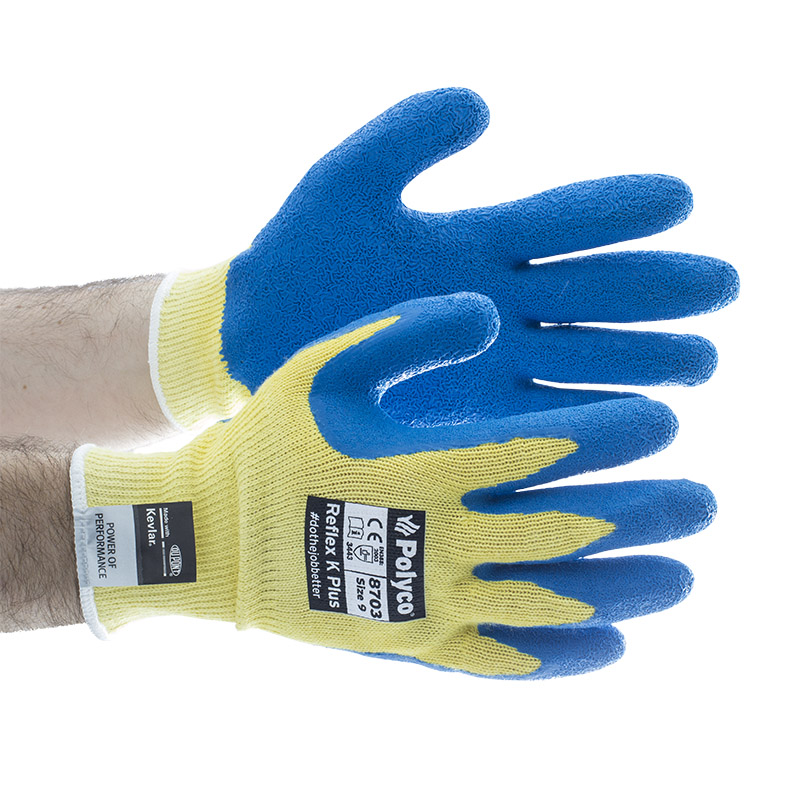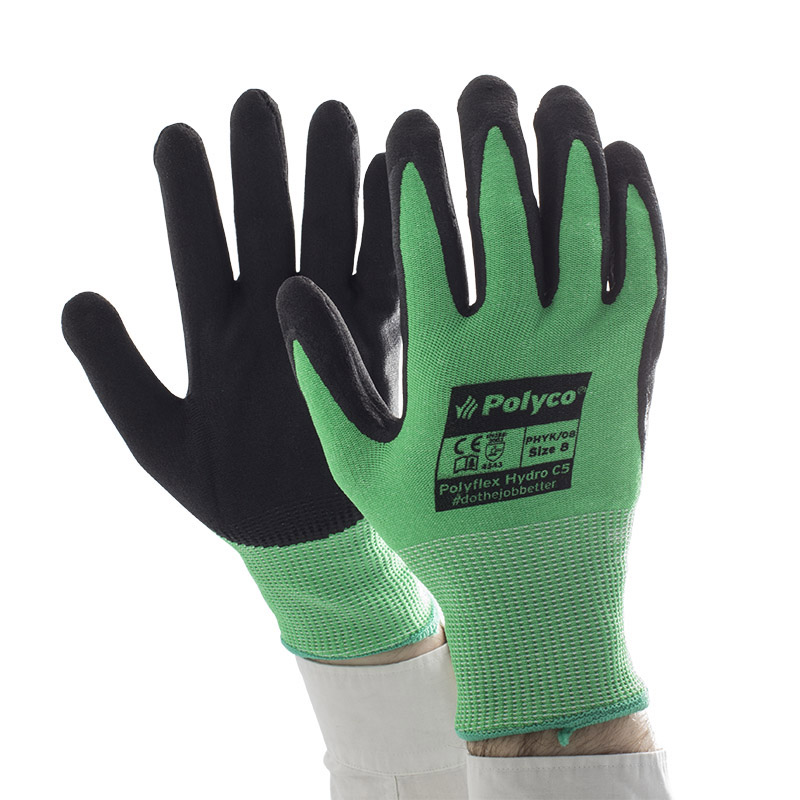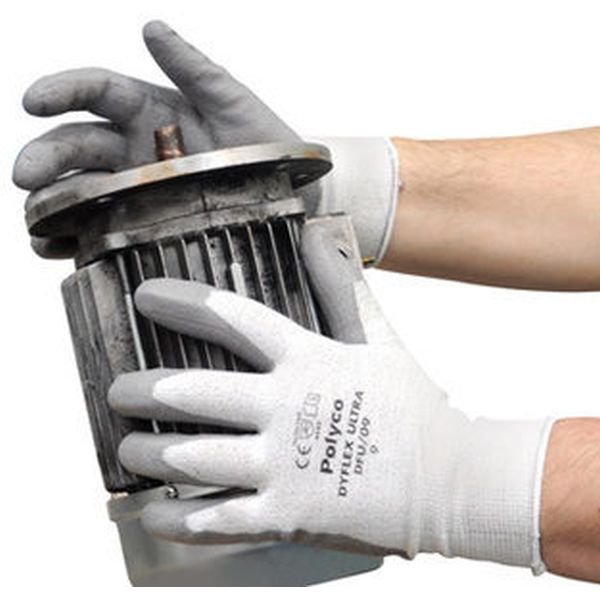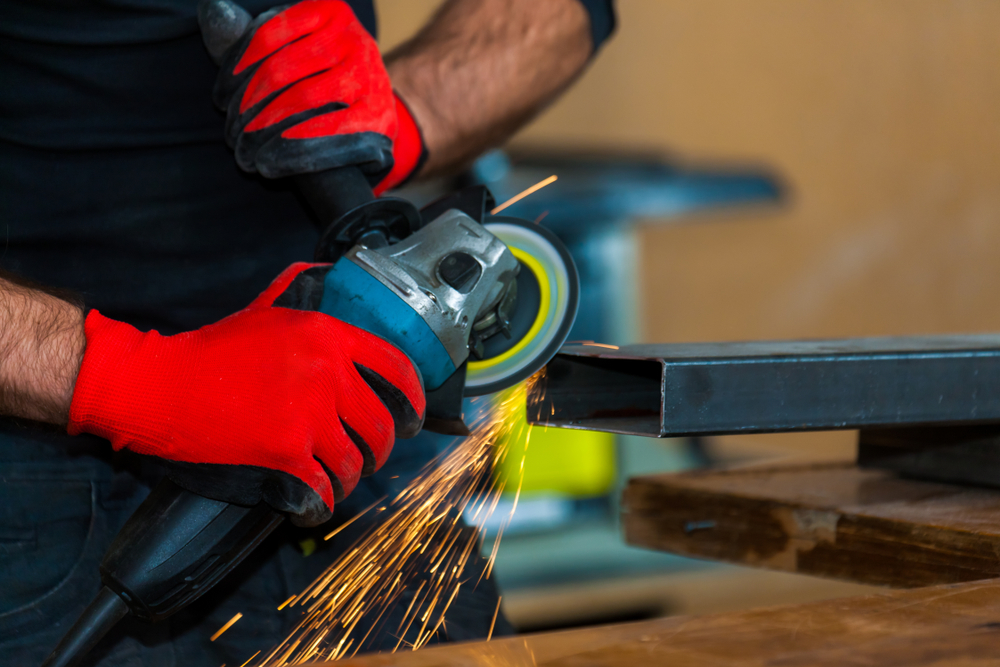Latex vs Nitrile vs PU: Which Work Glove Coating Should I Choose?5 December 2019 Work gloves have come a long way since the start of the century. New technology has changed the way that we protect our hands, and as technology has progressed, there have been significant changes in the materials that we use to protect our hands too. Work gloves generally consist of a flexible liner with either a palm, 3/4 or full glove coating that protects the hands against things like water, oil, abrasion, cuts, and heat.
In this article we're only concerned with the glove coating. There are plenty of glove coatings available, however usually you will find that you have to make a choice between latex, nitrile and polyurethane. Each coat has their pros and cons, so we've created this handy guide which will hopefully answer a few questions that you have when it comes to choosing your new work glove. Nitrile vs Polyurethane vs LatexNot too long ago, the majority of gloves would have used a latex palm. Now though things are a little different, and glove manufacturers have started to look at how different materials can provide different qualities depending on your industry. Manufacturers soon came to realise that nitrile worked fantastically well around oil, latex worked well in the dry and that polyurethane came with impressive flexibility. Nowadays most gloves are coated in polyurethane, nitrile or latex, so it's important to know which is which and why each coating is used. Below we analyse each coating, comparing them to one another before explaining the benefits of each. Head to Head
Please note that this is just a guideline for your typical coated work glove. Not every single nitrile-coated glove is completely oil proof, and not every single latex glove cannot be used around water. AnalysisLatex CoatedLatex-coated gloves are reliable and cost-efficient PPE. They are fantastic in dry environments, offer superb grip (especially in dry conditions), and they are incredibly durable, with the thicker coating protecting well against abrasion and other risks. The grippy design is ideal for handling things like glass and sharp metals, barbed wire, steel and other similar materials. Alternatively, if you are after working in the wet, with oil or with chemicals, then we would generally recommend that you stay away from a latex coating. It doesn't behave too well around water, and the thicker design can compromise your dexterity just a little. Overall, a latex coating is fantastic for dry tasks when a high level of grip is demanded. Key Industries: Glass handling, assembly, metal handling, scaffolding, roofing. Nitrile CoatedIf you're working with oil, with water or in hot and sticky conditions, think nitrile. Foam nitrile (the costlier version of flat nitrile) offers fantastic resistance to oil and water, with its sticky design soaking up slippery substances even when working with flat surfaces. The material provides superb grip, making it a perfect choice for things like mechanics and engineering tasks. On the other hand, nitrile is a little more expensive than latex, unless you go for flat nitrile which lacks the grip of foam nitrile. It doesn't perform as well as latex in dry conditions, but the thicker design does also mean that nitrile coated gloves tend to be pretty durable. Nitrile gloves are fantastic gloves for oily, dirty and high abrasion risk industries. Key Industries: Oil and gas, rigging, engineering, wet handling. Polyurethane CoatedOur last stop is polyurethane-coated gloves. We think polyurethane is a little underrated, it generally offers the same oil, water and chemical resistance as nitrile, however comes with far more dexterity and flexibility when you need it most. It isn't particularly more expensive either, partly because polyurethane is naturally grippy, and doesn't require any special manufacturing process to make it more sticky. It performs well in the wet, well in oil and well with chemicals. It is slightly less grippy in the dry than latex, and the lighter more flexible material doesn't last as long as a latex or nitrile glove. Aside from that, PU coats are fantastic, all-round coats, ideal for tasks such as mechanics, construction, warehousing and more. Key Industries: Timber handling, mechanics, construction, warehousing. These Coatings in PracticeWe've pitted together three of our best selling Polyco cut resistance gloves, each one coated in a different material just to see how they compare to one another. Through this practical guide, we hope that you'll be able to see which gloves perform best and which coating might be best for you.  Polyco Reflex K Plus: Latex CoatedFirstly we take a look at the Polyco Reflex K Plus, fantastic latex coated gloves that are fantastic for any dry handling tasks. Their latex coating is perfect for roofing, tiling and glass handling, providing the thickness needed for protection and the flexibility needed for tricky tasks. The most affordable glove out of the three, it is the latex coating that makes these a best seller in dry handling situations. Shop Now Polyco Polyflex Hydro C5: Nitrile Foam CoatedSecond on our list are the nitrile coated Polyco Polyflex Hydro C5 PHYK Cut Resistant Safety Gloves, which use their nitrile coating to repel oil and water, provide superb grip and offer fantastic protection against cuts, abrasion and tears. A little more affordable than the PU gloves, the Hydro C5's are the perfect choice for someone who doesn't require the dexterity of PU, but does require the oil and water resistance of nitrile. Comfortable, reliable and durable, these gloves sum up why nitrile is one of the world's most popular glove coats. Shop Now Polyco Dylfex Ultra: Polyurethane CoatedFinally, our PU coated gloves are the Polyco Dyflex Ultra Cut Resistance Gloves, which in true polyurethane fashion offer superb grip in oil, grease and water, offer superb comfort and provide a high level of flexibility. They are ideal for gripping wet and oily tools, working with equipment and operating machinery, where their impressive cut resistance will continue to protect your hands. They are more expensive however, and the thin design means that they might not last as long as if they had a nitrile coating. Shop NowChoose the Right Glove CoatingHopefully, this guide has given you a little information on the different types of glove coats that we have here at SafetyGloves.co.uk. If you want to see our wider range, please take a look at our PU coated, Latex Coated and Nitrile Coated categories. Have any questions, or anything to add? Tell us in the comments below, or find us on Facebook and Twitter! | |||||||||||||||||||||||||||||||||||||









